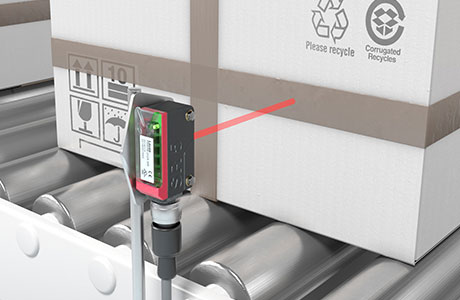Key Takeaway
A photoelectric sensor detects objects by sensing changes in light. It’s ideal for applications where precision is needed, like object detection and distance measurement. These sensors work best in environments with stable lighting conditions and are commonly used in industries like manufacturing and material handling.
An infrared sensor, on the other hand, detects heat and motion, making it ideal for security systems and vehicle detection. It performs well in low-light or dark environments but can be affected by temperature and dust, leading to less accurate readings.
Fundamental Differences Between Photoelectric and Infrared Sensors
When you enter the world of industrial automation, two sensors often come up for discussion: photoelectric sensors and infrared sensors. Both have their unique strengths and applications. However, understanding their differences can help you choose the right one for specific tasks. Let’s dive into the fundamental differences, performance under varying conditions, and their respective roles in industrial settings.

Key Applications of Photoelectric Sensors vs Infrared Sensors
When deciding between photoelectric and infrared sensors, the application plays a vital role. Photoelectric sensors are commonly used in areas where precise detection is essential, such as packaging lines, object counting, and assembly operations. These sensors excel at detecting products on conveyor belts, making them ideal for manufacturing environments. Their ability to detect both transparent and opaque objects accurately gives them an edge in production lines, where efficiency is critical. If precision detection is key to your process, photoelectric sensors are the best fit.
On the other hand, infrared sensors are more suited for tasks like temperature monitoring and intrusion detection. Infrared technology is sensitive to heat, making these sensors ideal for detecting human presence or temperature changes. They are commonly used in HVAC systems and security applications. When detecting motion or monitoring thermal activity is the primary requirement, infrared sensors outperform their photoelectric counterparts. The choice between these two technologies depends on the specific nature of the application and the performance required.
Performance Comparison in Various Environmental Conditions
Environmental factors greatly influence sensor performance, and it’s crucial to select the right sensor for the conditions. Photoelectric sensors perform best in controlled, well-lit environments. However, excessive ambient light can interfere with their functionality, reducing their accuracy. These sensors are better suited for indoor environments where lighting can be regulated. For example, in an assembly line where objects pass at high speed under consistent lighting, photoelectric sensors will deliver reliable results.
Infrared sensors, by contrast, thrive in low-light or dark environments, as they rely on detecting heat rather than light. This makes them more versatile in outdoor or poorly lit conditions, such as security systems in dark areas. However, extreme temperature variations can reduce their effectiveness, as infrared sensors are sensitive to heat fluctuations. Choosing between these sensors requires an understanding of the environment in which they will operate, ensuring their functionality remains uncompromised.
Cost and Efficiency: Photoelectric vs Infrared Sensors
Cost and efficiency are always at the forefront when selecting the right sensor for an industrial setting. Photoelectric sensors are slightly more expensive due to their higher precision and versatility. They are a long-term investment for industries requiring consistent, accurate detection, such as in manufacturing and logistics. While the initial cost may be higher, the durability and reliability of photoelectric sensors justify the expense, making them a cost-effective solution in the long run.
Infrared sensors, however, are more affordable and consume less power, making them a more efficient option for simpler tasks such as motion detection or temperature monitoring. Their lower cost makes them appealing for applications that don’t require the pinpoint accuracy provided by photoelectric sensors. In industries where budget constraints exist and the task at hand is less demanding, infrared sensors are a more cost-efficient choice, offering excellent value without compromising performance.
Which Sensor is Better for Your Industrial Automation?
The choice between a photoelectric and an infrared sensor depends entirely on your specific industrial needs. If your process demands high precision in object detection, particularly in well-lit environments, photoelectric sensors are the way to go. They offer excellent reliability and accuracy, making them indispensable in assembly lines, manufacturing, and other applications where the detection of objects plays a critical role.
However, if your industrial process involves monitoring heat changes, human movement, or takes place in a low-light environment, infrared sensors are the better option. They are efficient for applications like temperature monitoring and intrusion detection. By carefully assessing the exact requirements of your automation process, you can make an informed decision that balances efficiency, accuracy, and cost, ensuring optimal performance for your operations.
Conclusion
Both photoelectric and infrared sensors have their strengths. Photoelectric sensors excel in precision and are perfect for applications requiring object detection and counting. Infrared sensors, with their ability to detect heat and function in low-light conditions, are ideal for temperature monitoring or security applications. Your choice will depend on your unique industrial needs, but by understanding these strengths, you can make a more informed decision, improving your automation process while ensuring efficiency and cost-effectiveness.
